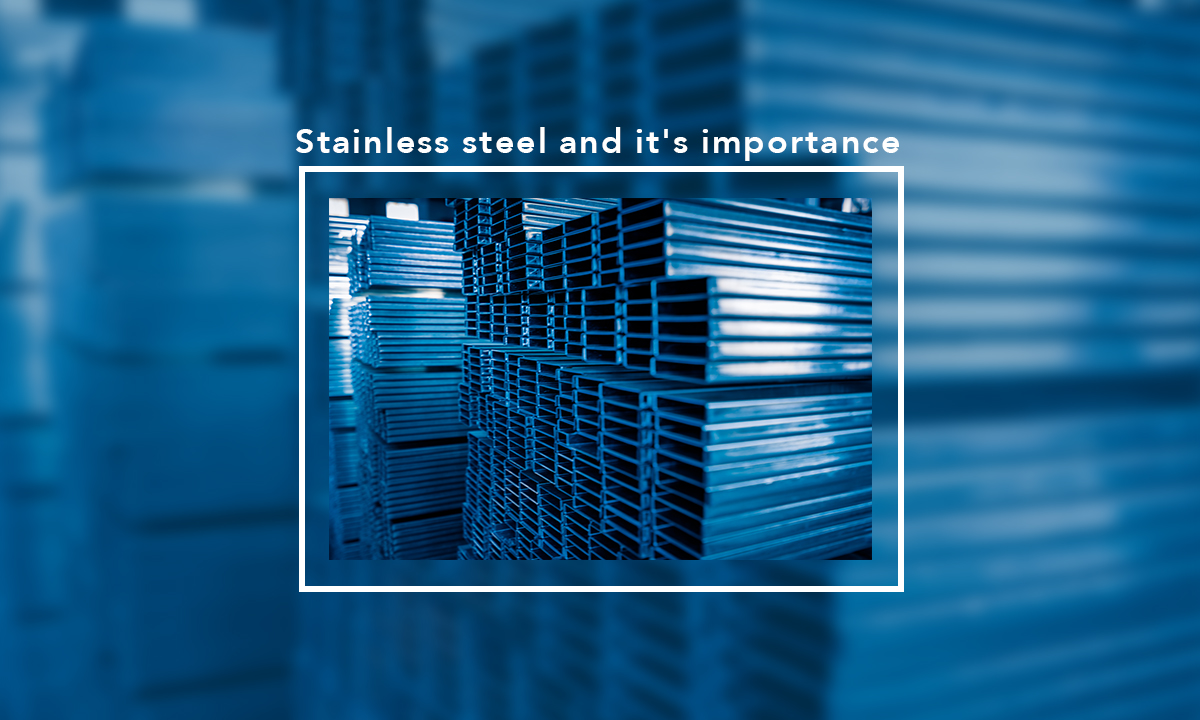Due to its excellent corrosion resistance, high strength and attractive appearance, stainless steel sees a wide range of uses across both industrial and consumer markets.
“Stainless” steel is actually a generic term referring to a variety of steel types. Like all other kinds of steel, stainless steel is made primarily from iron and carbon in a two-step process. What makes stainless steel different is the addition of chromium (Cr) and other alloying elements such as nickel (Ni) to create a corrosion-resistant product.
In addition to chromium, stainless steels are made with alloys of silicon, nickel, carbon, nitrogen, and manganese. Nitrogen, for example, improves tensile properties like ductility. Nickel is added to austenitic steel to improve flexibility. These alloys are added in varying amounts and combinations to meet specific end-use applications, which is why it’s very important for stainless steel manufacturers to verify that the correct percentages of each alloy are being used.
The Importance of Chromium in Making Stainless Steel:
Chromium is essential for the production of stainless steel; in fact there’s no viable alternative. Chromium is a hard, corrosion-resistant transition element that gives stainless steel its corrosion resistance. In general, the higher the chromium content, the more corrosion-resistant the steel.
Forming of stainless steel:
With the molten steel created, the foundry must now create the primitive shape used to cool and work the steel. The exact shape and dimensions will depend on the final product.
Common shapes include:
- Blooms
- Billets
- Slabs
- Rods
- Tubes
Forms are then marked with an identifier to track the batch through the various processes to follow.
From here steps will differ depending on the intended grade and final product or function. Slabs become plates, strips and sheets. Blooms and billets become bars and wires.
Depending on the grade or format ordered, a steel might go through some of these steps multiple times to create the desired appearance or characteristics.

Two of the more commonly used grades of austenitic stainless steel are grades 304 and 316. To help you determine which grade is right for your project, read the article to the end to know the difference between 304 and 316 stainless steel.
304 Stainless Steel:
Grade 304 stainless steel is generally regarded as the most common austenitic stainless steel. It contains high nickel content that is typically between 8 and 10.5 percent by weight and a high amount of chromium at approximately 18 to 20 percent by weight. Other major alloying elements include manganese, silicon, and carbon. The remainder of the chemical composition is primarily iron.
The high amounts of chromium and nickel give 304 stainless steel excellent corrosion resistance. Common applications of 304 stainless steel include:
- Appliances such as refrigerators and dishwashers
- Commercial food processing equipment
- Fasteners
- Piping
- Heat exchangers
- Structures in environments that would corrode standard carbon steel.
316 Stainless Steel:
Similar to 304, Grade 316 stainless steel has high amounts of chromium and nickel. 316 also contains silicon, manganese, and carbon, with the majority of the composition being iron. A major difference between 304 and 316 stainless steel is the chemical composition, with 316 containing a significant amount of molybdenum; typically 2 to 3 percent by weight vs only trace amounts found in 304. The higher molybdenum content results in grade 316 possessing increased corrosion resistance.
316 stainless steel is often considered one of the most suitable choices when selecting an austenitic stainless steel for marine applications. Other common applications of 316 stainless steel include:
- Chemical processing and storage equipment.
- Refinery equipment
- Medical devices
- Marine environments, especially those with chlorides present
Which Should You Use: Grade 304 or Grade 316:
Here are some situations where 304 stainless steel may be the better choice:
- The application requires excellent formability. The higher molybdenum content in Grade 316 can have adverse effects on formability.
- The application has cost concerns. Grade 304 is typically more affordable than Grade 316.
Here are some situations where 316 stainless steel may be the better choice:
- The environment includes a high amount of corrosive elements.
- The material will be placed underwater or be exposed to water consistently.
- In applications where greater strength and hardness are required.

Corrosion resistance is the main advantage of stainless steel, but it certainly isn’t the only one , Stainless steel is also:
- High and low temperature resistant
- Easily fabricated
- Strong and durable
- Easy cleaned and maintained
- Long lasting, with a low lifecycle cost
- Aesthetically attractive
- Environmentally friendly and recyclable.
- Increased corrosion resistance
- Improved strength
- Improved weldability
- Improved formability
- Controlling magnetism
Finally:
Understanding the grades and types of stainless steel for appropriate use and specific environments is an essential part of ensuring long-term results and reducing costs. Whether you are looking for something strong and resistant to corrosion or something amazing, easy to clean, strong, hard-wearing, and exposed to high temperatures without being affected, there is a stainless steel alloy that can be used to fit your needs, and also if you are looking for a machine to start a new project or an existing project for anything As for packaging, mention that CUBII is your best choice. We manufacture all machines and parts of stainless steel 304 and 316, which is the best grade of stainless steel. We also have experience and quality. Therefore, CUBII machines are Egyptian machines of international quality.
 Rotary_filling_and_sealing_machine_CUBII
Rotary_filling_and_sealing_machine_CUBII
To learn more about Kubei’s machines and their quality, you can watch this video:




